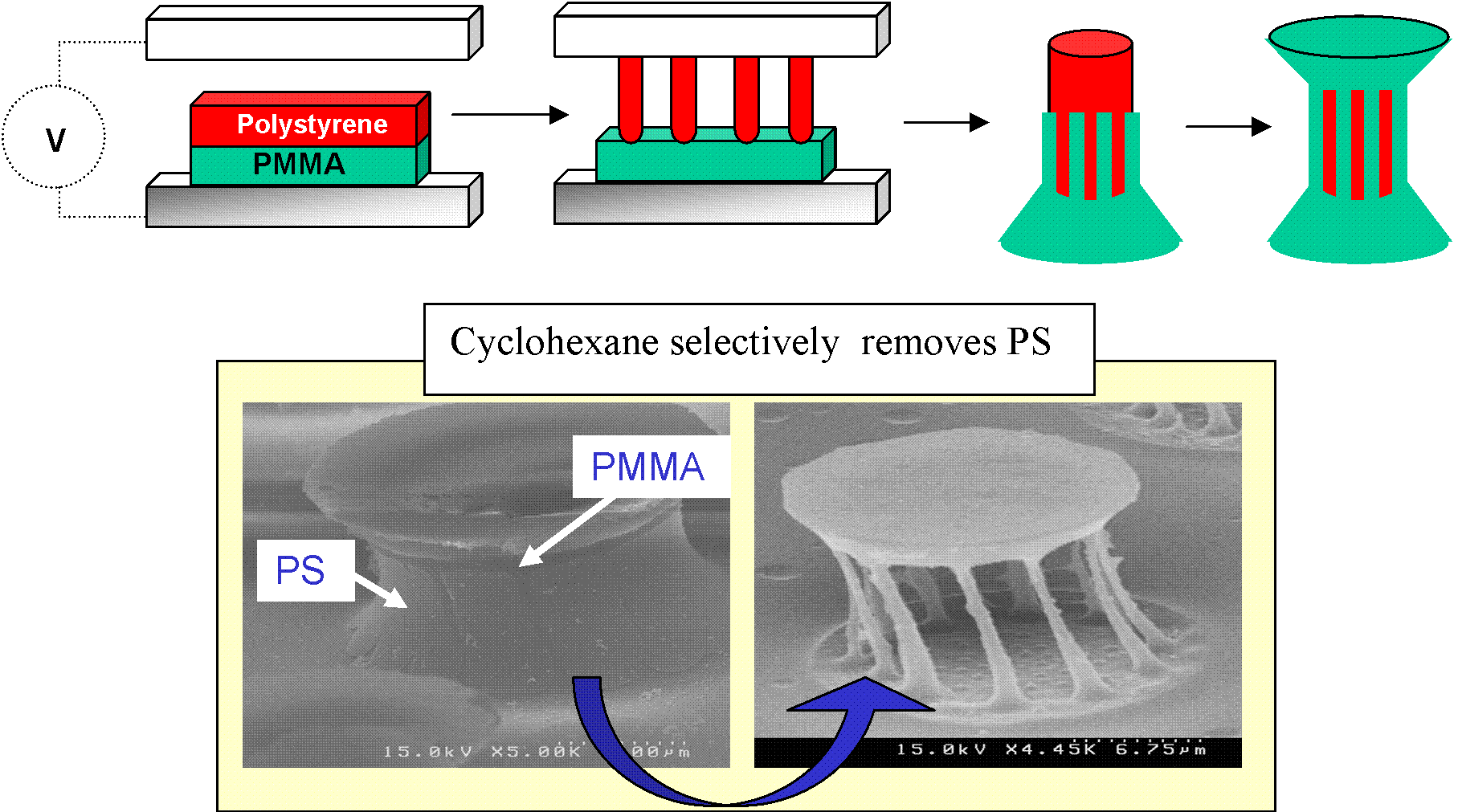Pillar Arrays Formed Via Electric Field Assisted Assembly |
Introduction |
| Arrays of pillars form across
a thin gap when an electric field is applied normal to a thin film (see
figure). This “directed assembly” based process is an attractive patterning
technique since pillars form spontaneously using simple, inexpensive equipment. |
 |
| Figure: A thin film is placed between
two parallel plates that resemble a capacitor. Applying a voltage across the
gap generates an electrostatic force at the film-air interface that
amplifies surface undulations until pillars span the gap. |
Background |
Initial work on the pillars process was done by the
research groups of Steven Chou (Princeton), Tom Russell (University of Massachusetts, Amherst),
and Ulrich Steiner (University of Cambridge).
|
| Much of the
initial work in the literature focused on polymer systems, which require
heat to raise the temperature of the film above the glass transition
temperature so it can flow. Most of the work done in our group has been
in collaboration with the Russell research group (Suresh Gupta and Dr.
Amanda Leach) to further explore the capabilities of electric field
assisted assembly. The work has focused on the use of Polystyrene /
Polymethyl methacrylate (PMMA) bilayers to study the resulting
hierarchical structures that are formed (see figure). Publications
generated from this collaboration are listed below ([1] and [2]). |
 |
| For more details >> Continue to
Process & Projects |
References |
-
Chou, S. Y.; Zhuang, L.; Guo, L. Applied Physics Letters 1999, 75,
1004-1006. Schaffer, E.; Thurn-Albrecht, T.; Russell, T. P.; Steiner, U. Nature
(London) 2000, 403, 874-877.
-
M. D. Dickey, S. Gupta, K.A. Leach, C.G. Willson, and T. P. Russell. “Novel 3-D
structures in polymer films by coupling external and internal fields,” Langmuir
(submitted).
-
K.A. Leach, S. Gupta, M. D. Dickey, C.G. Willson, and T.
P. Russell. “Electric Field and Dewetting Induced Hierarchical Structure
Formation in Polymer/Polymer/Air Trilayers,”
Chaos (in press).
|


